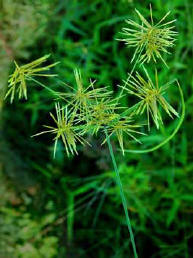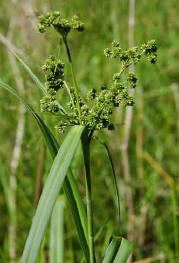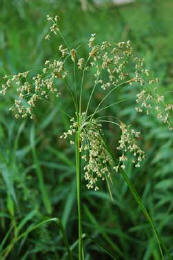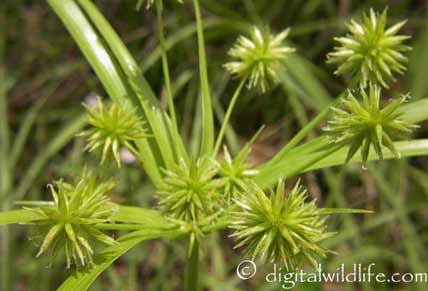|
Ancient
Egypt by Sjef Willockx |
||||||||||
|
As we just saw in the previous section, Upper Egypt as a region is in the script not (as we would have expected) indicated with a lotus sign, but with a sign that depicts a very different plant: a sedge. More specifically: M26 represents a flowering sedge. So let us take a closer look at this species. We have already met the sedges briefly: they are the family of which papyrus is a member (see section 5: “Papyrus: introduction”).
To simply label a plant “a sedge” is hardly more
specific than calling it a weed. The
Encyclopedia Britannica’s definition of a sedge is: any plant of the
family of Cyperaceae: a family of “grasslike herbaceous plants found
especially in wet regions throughout the world”. It adds that this
family is among the 10 largest families of flowering plants, counting
some 5,000 species. Nevertheless, M23 and M26 do indeed remind one of
sedge-like plants. However, to be more specific about the exact species would
simply require more detailed drawings of the plant in question than the
Egyptians have left us.
© kgNaturePhotography.com, section of Wetland Sedges (non-Carex). The Cyperus species is from the same genus as papyrus. Scirpus is another genus from the family of Cyperaceae. I’ve included the Scirpus varieties because Gardiner mentions “scirpus-reed” as a possible identification of M23/M26 (Grammar, 73). Unfortunately, Scirpus has over 40 different species.
|
|
|||||||||
|
|
All materials on this site are protected by copyright. All copyright by Sjef Willockx, unless otherwise indicated. |



